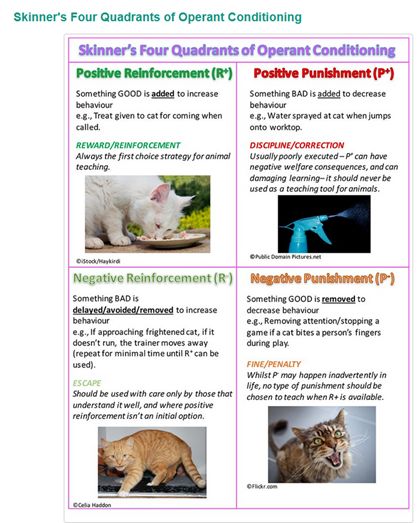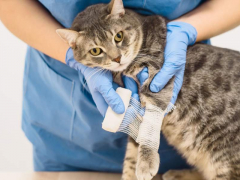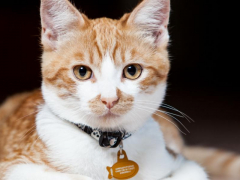
The most important thing we need to know about our cats is that they perceive the world differently from us. So when a cat displays undesirable behavior, it may be due to many different factors. These might include bad habits that weren’t quashed during kittenhood, your cat’s natural instincts, or because they are trying to communicate that something isn’t right in their world.
In this article, we will examine why cats may “act out,” how cats learn, and how to implement practical behavior modification techniques, instead of punishment. This guide will help both you and your cat learn to live together in harmony and help you better understand feline behavior.
Do Cats Intentionally Misbehave?
When a cat feels safe and secure within their home environment, they engage in daily routines with a sense of control over their territory. However, when a cat is anxious, fearful, or unwell and cannot exercise their natural instincts, they will likely behave in a manner that may not be acceptable to us.
Domestic cats don’t intentionally misbehave. Cats don’t think like people in terms of doing the right or wrong thing. This means that they don’t feel guilty and they don’t act out of spite. All they care about is fulfilling their daily needs. For instance, a cat may scratch the couch because it’s sturdy and the current cat scratcher is wobbly or because they feel the natural need to mark their territory.
A cat may pee on the rug due to a urinary tract infection or bite a caregiver due to boredom and under-stimulation. A cat may also engage in attention-seeking behavior like excessive meowing, which the owner may reinforce unintentionally by feeding the cat, even though the cat isn’t hungry.
Understanding how cats learn is the key to helping them correct undesirable behavior and to live their best life.
How Cats Learn
Behavior always serves a purpose for the animal and relies on the animal’s genetics and environmental input. Conduct continually shifts throughout an animal’s life; cats constantly change and update their behaviors to survive and prosper.
First, recognize that your cat is not a dog. Dogs have been shaped across generations to work and train with people. A cat’s learning ability is flexible; their behavior constantly shifts due to exposure to stimuli. They learn continuously by observing us and interacting with their environment.
Cats can problem-solve and learn all manner of cat-relevant and human-taught behaviors when motivated to do so and while in a positive emotional state. Training or reprimanding a fearful/anxious cat will not correct any behavior. It will actually exacerbate their anxiety. Let’s look at the most successful methods to discipline a cat.
How to Discipline a Cat the Right Way

Cats respond well to positive reinforcement and are best trained using this technique.
The most effective approach for disciplining a cat and changing their behavior includes providing your cat with an acceptable outlet for their natural behavior. This, along with reward-based training is the way to go.
Most techniques rely on Operant Conditioning which is applicable in feline behavior modification. Operant conditioning involves learning by consequence; the cat is either reinforced or punished for their action.
Operant Conditioning consists of four quadrants:
- Positive Reinforcement (R+) – Add something valued to increase behavior. For instance, teach your cat a cue to sit and instantly reward them with a treat after they sit.
- Positive Punishment (P+) – Add something unpleasant to decrease behavior. For example, spray a cat with a water bottle when they jump onto a kitchen counter (to be clear, you should avoid this method).
- Negative Reinforcement (R-) – Remove or delay something they don’t like to increase the desired behavior. For example, while approaching a fearful cat in a shelter setting, the trainer takes a few steps back if the cat doesn’t run away. (This method should be used with care by professionals only and where positive reinforcement isn’t an option).
- Negative Punishment (P-) – Remove something desirable to decrease the behavior. For instance, if your cat bites your finger during play, stop playtime, remove the toy, and leave the room.

Skinner’s Four Quadrants of Operant Conditioning example
Using Positive Reinforcement
Positive reinforcement should be the first training route since it builds confidence and resilience and encourages problem-solving abilities. It teaches animals good manners, tasks, and human-acceptable behaviors (such as using a litter box, coming when called, etc.). All the while, it builds a solid bond between you and your kitty.
Here are a few ways to apply the science of positive reinforcement to modify your cat’s undesired behavior.
Counter-Surfing
The most effective way to reduce your cat’s counter-surfing is to train them to ‘go onto a mat’ with clicker training. Teaching your cat to go to a specific spot where they get rewarded with treats diminishes the likelihood that they will jump on the counter since there won’t be anything exciting or rewarding for them to do up there.
The following video shows Mat Training.
Night Shenanigans
If your cat wakes you up in the middle of the night, asking to be fed or wanting playtime, don’t inadvertently reward the behavior by getting up and giving them attention. Instead, train them with interactive playtime or marker training before bedtime to tire them out. Additionally, feed them before you head to bed, set up an automatic feeder, or leave them a puzzle feeder to ‘hunt’ for their meal.
Cat Biting While Brushing
Although cats carry out most of their own grooming, helping them out through brushing is vital for coat maintenance, matting prevention, and reducing hairballs. If your cat bites during grooming, introduce the brush by letting them sniff it and then reward them with a treat.
Gently place the brush on your cat’s favorite place to be pet, and give them a delicate brushing. This will help them to associate the brush with positive feelings. Once your cat is relaxed, continue to increase the length of the time you brush your cat and repeat the above steps until they find grooming a pleasurable experience.
Why You Should Not Ignore Your Cat’s Behavior
Ignoring your cat to stop bad behavior doesn’t work.
When a cat learns that a particular behavior works for them, they will continue relying on that behavior gain something they want. Ignoring your cat will leave them confused and frustrated, potentially leading to aggression in the form of swatting and ankle-biting.
Response substitution is much more helpful in changing unwanted behavior and fulfills the cat’s needs. For example, instead of feeding your cat treats every visit to the kitchen, introduce them slowly to a puzzle feeder filled with their favorite food placed in a different room in the home. This removes any potential frustration, ankle-biting, or potential weight gain.
Why Punishment Doesn’t Work With Cats

Cats do not respond well to punishment. If anything, it only increases bad behavior or creates new problems.
Never punish your cat by shouting, smacking, pulling them by the scruff of the neck, or spraying them with water.
The biggest problem with negative and positive punishment is that it’s rarely administered precisely at the right time. More often, punishment comes after the event has happened. Hence, your cat may associate it with the offender or something accidental within the environment but not necessarily the ‘crime.’
Moreover, physical punishment doesn’t teach a practical substitution for how to avoid reprisal in the first place.
Reprimanding your cat has the potential to cause emotional conflict, anxiety, and frustration. This will only cause your cat to shut down or even create more problematic behavior such as aggression. In the end, the result is potential damage to the human-pet bond. Instead, set your cat up for success by preventing what you don’t want them to do and reinforcing what you do want them to do.
No owner wants to ruin a long-lasting relationship with their cat to stop a few undesirable behaviors. Training our cats for success by using reward-based training will teach them exactly what we expect without needing to discipline them in a negative way.
Also Read: Why Is My Cat Obsessed With The Sink? 6 Reasons Why
-
Academy, K. P. (2016). Why Train a Cat. USA. Retrieved November 12, 2020
-
Care, I. C. (2020, September 01). Module 6 What do I know and what can I learn. International Cat Care Advanced Feline Behaviour for Vet Professionals. UK. Retrieved November 05, 2022
-
Consultants, T. I. (2022). IAABC Statement on LIMA. Retrieved November 08, 2022, from IAABC: https://m.iaabc.org/about/lima/
-
Helen Tuzio, T. E. (2004). FELINE BEHAVIOR GUIDELINES. (A. A. Practitioners, Compiler) USA: AAFP. Retrieved November 10, 2022







